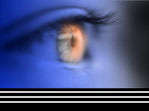We offer a few technical pointers that are visually clarified on the
"Knowing the Difference" pages.
Additionally, we notice there is some confusion on the market over the issue of platemarks. One
rule of thumb that helps clear the confusion : Neither the ab-sence nor the presence of a plate mark
on an old print constitute a benchmark for identifying an engraving; es-pecially in the realm of bookplate engravings. All
engrav-ings have platemarks upon their initial stage of printing, but publishers or binding
companies would often trim away the platemark of an engraving in order to fit the for-mat of a book. This happened
even with larger bound folios, though less frequently.
In other words,
a "photogravure" or "photoetching" with a platemark around it does not make it an engrav-ing, or , conversely, an
engraving without a platemark can still be an engraving.
A couple salient points on the terms : "reproduc-tion"
and "original".
We do not
sell 20th or 21st Century reproductions and represent them as "antique". On occasion, we will offer late 19th or early
20th century photogravures; on fewer occcasions, halftones if they are done extreme-ly well and constitute a particular
rare find. ( Refer to our "Knowing the Difference " pages )
In the 19th
century, the word "reproduction" was commonly used to describe the process of an engraver who, in point of fact, "reproduced"
a painter's painting or watercolor or draftman's drawing by incising the same image onto a metal plate or wood block ( or
by drawing on stone as in the case of lithographs ) as accurately as talent would allow in order to facilitate the publication
of an artist's work, or simply to "embellish" ( a term fre-quently used ) the text of a book.
In this context,
Victorians, Europeans and Americans used the term "reproduction" with impunity and without shame : A "reproduction"
did not bare the stigma engen-dered by the market abuses the 20th century.
Thus we can
distingiush between the term "repro-duction", meaning an image by one artist re-created by another artist; and the
term "original", meaning an image created by one and ( usually ) only one artist.
There are occasions when a painter will create an etching after his/her own painting, and if that etching
is created by the original artist, "after" his/her own painting, it is still generally considered an original work of
art, if for no other reason than that the etching remains the artist's own original image. ( Click "after" for Art Terms )
In addition to the biographical info. we will
have on this site, we will also include complimentary bio. excerpts from the standard references of the trade, with the
sale of each print. Our "Knowing the Difference" pages and our "Art Terms" pages will also assist you in the authentication process.

